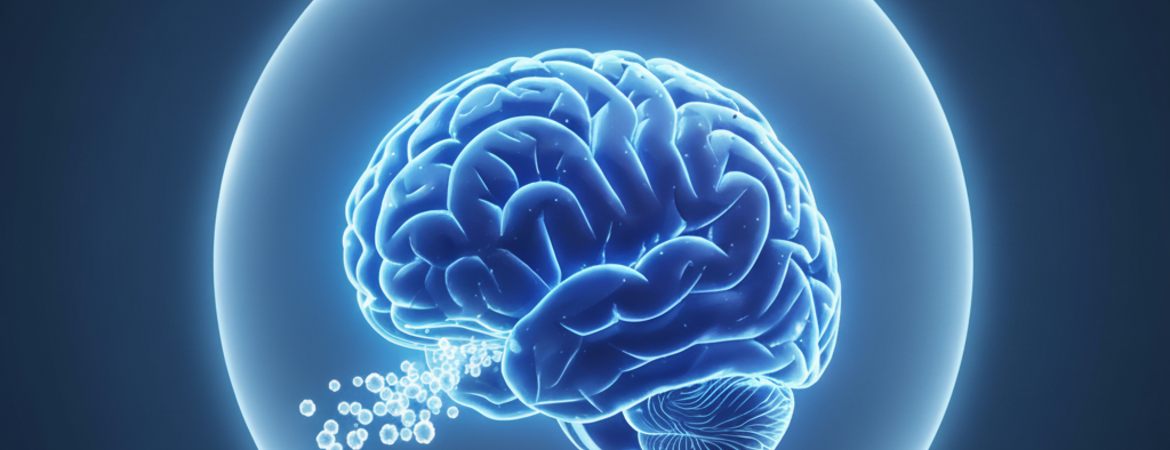
Alzheimer’s disease is the leading cause of dementia, a condition that affects memory and thinking. Previous research has focused on two hallmark proteins: amyloid plaques and tau tangles, yet the upstream changes that occur before the appearance of these features in the brain are still not well understood. While these proteins remain central to Alzheimer’s, new work has uncovered the role of lithium, a natural element in the brain used for treating mood disorders. In this study, scientists compared lithium levels in brain tissue from three groups: healthy individuals, people with mild memory impairments, and people with Alzheimer’s. They discovered that lithium levels were lower in people with early memory loss and lowest in Alzheimer’s patients, suggesting a correlation between lithium imbalance and disease development.
Furthermore, lithium interacts with a protein, tau, that builds up in the brain, and without it, this protein clumps together, damaging memory and thinking. Experiments throughout this research evaluated short-term memory, the ability to recall temporary information, and memory retrieval, the ability to recall stored information over a period of time. These deficits are some of the first to be affected in early stages of cognitive impairment in Alzheimer's and are effective indicators of decline.
Methods
This study combined human brain and blood serum samples with mouse models to link lithium deficiency to Alzheimer’s. Initially, investigators compared human brain groups at different progression stages of Alzheimer’s: no cognitive impairment, mild impairment, and Alzheimer’s. Brain samples of the prefrontal cortex were evaluated using mass spectrometry (a machine that weighs tiny molecules by blasting them and timing how fast they fly) to evaluate lithium levels. This revealed that lithium loss in the prefrontal cortex of the brain appears in early stages of the disease.
To prove causation, they experimentally depleted lithium in mice, reproducing Alzheimer’s pathologies, then reversed these effects with lithium supplementation. In order to evaluate memory changes, researchers used experiments that tested their memory, like the Y maze, where they needed to remember a previously taken path, and the Morris water maze, which tested their memory retrieval of a hidden platform that was kept in the same place over the course of a week. This stepwise approach (human observation, mechanistic modeling, then therapeutic testing) emphasizes lithium loss as an early driver of Alzheimer’s and implicates lithium supplementation as a promising intervention strategy.
Results
The study found that lower levels of lithium have negative effects on the brain. In human brains, lower levels of lithium were found in the prefrontal cortex of those with confirmed cognitive impairment and Alzheimer’s. Furthermore, mice that were given a diet with varying levels of lithium and put through mazes that were used to test their memory retrieval and short-term memory showed that lithium-deficient mice were unable to perform well in these exercises. The lithium-deficient mice had a faster buildup of tau, and even normal mice couldn't perform well if they didn’t have enough lithium supplementation.
Analysis
This article shows that lithium content in the brain depletes during memory decline and AD. In a mouse model, when brains run low on lithium, Alzheimer’s develops through more protein buildup, inflamed immune cells, loss of synapses and myelin, and memory problems due to overactive enzymes. Treating mice with a variant of lithium avoided this buildup and kept lithium neurologically available, further reducing Alzheimer's symptoms.
Conclusion
This study shows that lithium plays an important role in protecting against aging and Alzheimer’s disease. The findings support the idea that when the brain loses its balance of lithium, it can set off some of the earliest changes that lead to Alzheimer’s. In both human brain samples and mouse models, low lithium was connected to more plaque buildup, tau tangles, inflammation, loss of brain connections, and memory decline. When lithium was replaced, especially with a form called lithium orotate, these problems were reduced, even to the extent of being prevented.
The big discovery within this study is that lithium is not just a drug that is used for psychiatric treatment. It is also a natural factor that helps the brain stay resilient as we get older. This shifts the way we think about lithium, from only being known as a medicine for bipolar disorder to possibly being a protective element against brain aging and brain deterioration.
This points to lithium balance as a key target for understanding how we can identify early-onset molecular changes in Alzheimer’s, and could be a critical piece in preventative treatments. To aid future research in degeneration, it suggests ideas of testing safer forms of lithium, like lithium orotate, in clinical trials to see if they can help protect memory and cognitive function in humans. And for society, it raises the possibility that even everyday exposure to lithium, like its amount in drinking water or diet, could potentially play a role in dementia risk.
Link to paper: https://www.nature.com/articles/s41586-025-09335-x